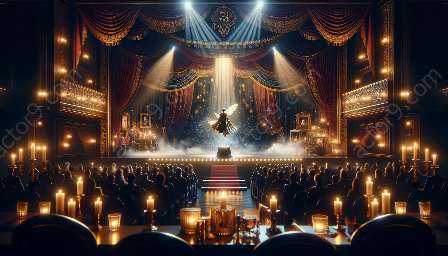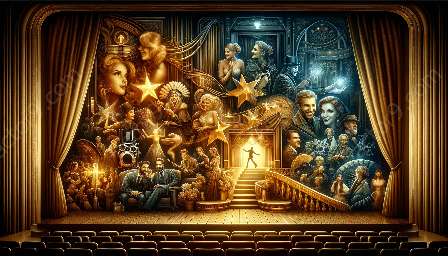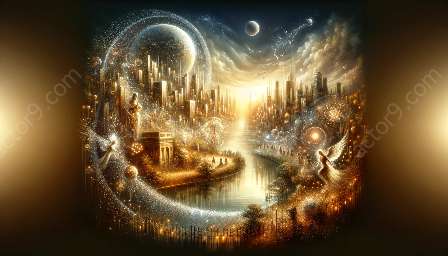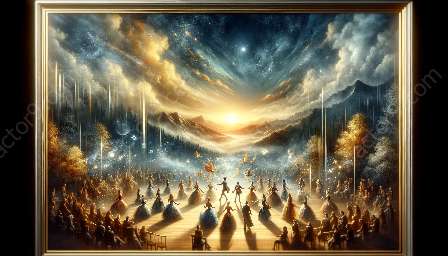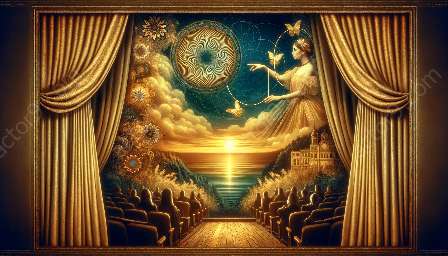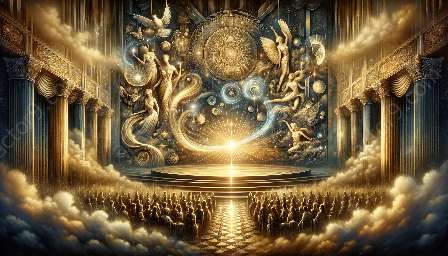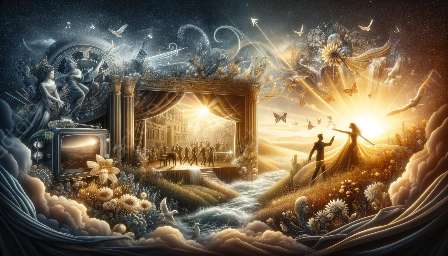Stage illusions, often associated with the art of magic and illusion, play a vital role in enhancing the storytelling in theatrical performances. These captivating and enigmatic tricks can mesmerize audiences, blur the lines between reality and fiction, and provide a dynamic, multifaceted layer to the overall narrative. By seamlessly integrating stage illusions into the theatrical production, directors and performers can take the audience on an extraordinary journey, evoking emotions, creating suspense, and leaving lasting impressions. This article delves into the ways stage illusions contribute to storytelling in the world of theater, exploring their use, techniques, and impact on the audience experience.
The Art of Illusion in Theater
At its core, stage illusions are a form of art, combining visual effects, sleight of hand, and misdirection to create a sense of wonder and amazement. In the context of theatrical performances, these illusions serve as powerful tools to enrich the narrative, convey abstract concepts, and portray magical or surreal elements in a believable manner. The seamless integration of illusions into the storytelling process can elevate ordinary scenes into extraordinary moments, capturing the imagination of the audience and drawing them deeper into the world of the play.
Capturing Audience Imagination
One of the primary ways stage illusions contribute to storytelling is by capturing the audience's imagination. With carefully choreographed illusions, theater productions can transport spectators to fantastical worlds, introduce supernatural occurrences, and blur the boundaries between the real and the unreal. These mesmerizing moments create lasting impressions and enhance the overall theatrical experience, leaving the audience in awe and sparking their curiosity about the unfolding narrative.
Emotional Impact and Suspense
Stage illusions have the power to evoke a wide range of emotions, intensifying the impact of the storytelling. Whether it's a breathtaking vanishing act, a spellbinding levitation, or a miraculous transformation, illusions can build suspense, surprise the audience, and elicit a sense of wonder. By strategically incorporating illusions at pivotal points in the story, theatrical performances can heighten dramatic tension, create memorable climactic moments, and keep the audience on the edge of their seats.
Enhancing the Narrative
Illusions can also serve as visual metaphors, symbolizing deeper themes and ideas within the narrative. Through subtle yet mesmerizing tricks, theatrical productions can convey abstract concepts, explore the human psyche, or add layers of complexity to the characters and their journeys. By integrating illusions that resonate thematically with the story, directors and playwrights can infuse the performance with an added layer of depth and meaning, prompting audiences to contemplate and interpret the narrative on multiple levels.
Engaging and Immersive Experience
By seamlessly incorporating illusions into the storytelling, theatrical performances offer audiences a truly immersive and engaging experience. The element of surprise, wonder, and mystery brought about by stage illusions invites spectators to actively participate in unraveling the narrative. This interactive engagement goes beyond traditional forms of storytelling, as the audience becomes a part of the magic, experiencing the story in a more profound and memorable way.
Technical Skill and Innovation
Behind the seamless execution of stage illusions lies a complex amalgamation of technical skill and innovation. From designing elaborate sets and props to mastering the art of illusion, the technical prowess involved in bringing these mesmerizing moments to life adds an extra layer of admiration for the audience. Theater technicians and illusionists collaborate to push the boundaries of what is visually possible, creating awe-inspiring spectacles that amplify the overall impact of the storytelling.
Blurring Reality and Fiction
As storytelling unfolds through stage illusions, the lines between reality and fiction become beautifully blurred. Spectators are invited to suspend their disbelief, embracing the unexpected and the inexplicable. This dynamic interaction between the real and the imagined allows for a rich and immersive narrative experience, where the juxtaposition of logic and illusion enhances the magic of theater and leaves a lasting impression on the audience.
Conclusion
In conclusion, stage illusions serve as compelling storytelling devices in theatrical performances, offering a captivating blend of artistry, emotion, and technical skill. The seamless integration of illusions into the narrative not only captures the imagination of the audience but also enhances the overall theatrical experience, adding depth, intrigue, and a touch of magic to the storytelling. Through their ability to evoke emotions, convey thematic meanings, and transport spectators to extraordinary realms, stage illusions continue to play a crucial role in shaping the dynamic and enchanting world of theater.



